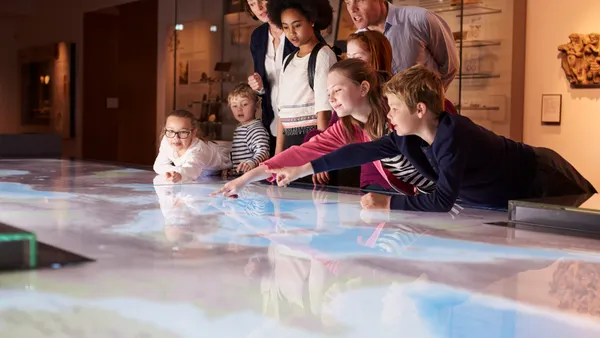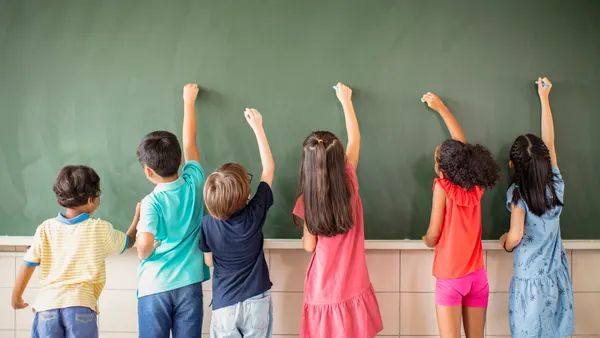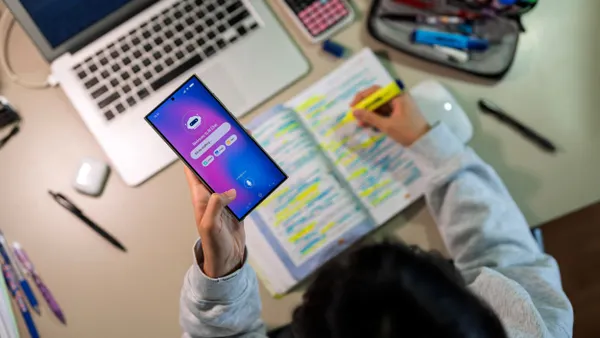Library summer reading programs have grown beyond the book checklists of years past. Instead, public libraries are digging deep into the creativity bag to stitch some maker experience, contests and even — in one case — a rock & roll bowling event.
While getting kids to read during the summer months is a focus for parents and educators alike, librarians know the key to getting books into children’s hands is to get them into the library in the first place.
“The chance to put a free book into the hands of a child who might not otherwise have access to books during the summer is worth every effort,” Jina Felton, library operations manager for the North Olympic Library System (NOLS) in Washington told Education Dive via email. “And by taking library programming out into the community, larger audiences are reached — some of them being families who don’t regularly visit the library.”
Libraries can get an influx of thousands of people every year, depending on the city and the library system. The Rochester Public Library in Minnesota, for example, says it had a 52% jump from 2016 to 2017, when 4,042 people took part. This year, librarian Heather Acerro is expecting 5,000 people. NOLS has also seen more kids over the years, with 16% more kids and 6% more teens in 2017 compared to 2016.
While past years' reading programming at NOLS included solar eclipse viewing parties and art events, this year, the library system is adding an escape room challenge, book talks with donuts and rock & roll bowling. And besides the free donuts, people get a free book just for signing up and a t-shirt if they complete 30 days of reading — but all leave with some literacy practice under their belts.
While summer homework is almost a guarantee today in the majority of K-12 schools, reading contests and programs are something different: They’re meant to be fun. The idea of a child tucked into a book while crunching an apple on a warm summer afternoon probably doesn’t mirror reality anymore, but keeping students reading during the long summer months is a goal schools and librarians definitely want to hit.
Kids of all ages
While summer reading programs certainly have children in mind, most encourage readers of all ages. At NOLS’ Port Angeles Main Library location, more than 40 teens have volunteered for the past two years, acting as teen leaders while working with younger children.
At the Santa Barbara Public Library (SBPL) in California, high-schoolers also volunteer and help with the summer reading program. There, library director Jessica Cadiente told Education Dive in an email that children ages 12 and under track the amount of time they read, while older students and adults instead keep track of the number of books they read. SBPL is also encouraging teens to take part in a coding challenge this summer to identify a community issue and create a computer program that can help solve it.
Rochester Public Library directly invites adults to take part in its summer program, called the Summer Playlist, and has since 2017. Anyone can find 20 golden-colored, paper bookmobiles hidden inside local mini-libraries, which can be exchanged for goodies including sunglasses, sunscreen and even a $25 Target gift card.
Community hub
Getting kids into the library is a great feat during the summer. Connecting the community is also a by-product of those efforts.
At Pine River Library in Colorado, the annual summer reading programs attract upwards of 350 children, which includes events like this year’s World Dance Parties. Librarian Kate Brunner creates "kids-friendly playlists," on Spotify, she told Education Dive in an email. And while that activity isn’t directly focused on reading, Brunner said she believes any activity that gets parents and caregivers into the library is crucial to a child’s lifelong educational success.
"From my perspective, families that participate in the summer reading program together, not only give their children the opportunity to engage in all sorts of out-of-classroom learning, but also create stronger family bonds that support children's growth and development," Brunner said. "Bringing people together and building community is what our library is all about."











